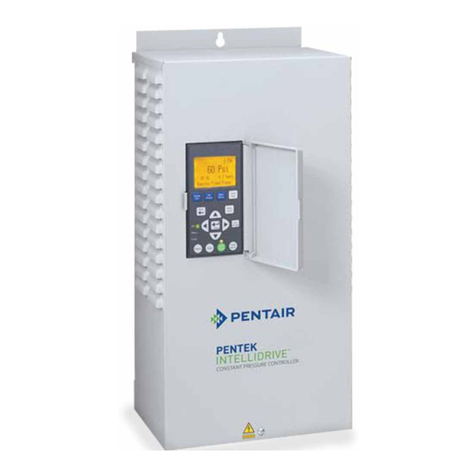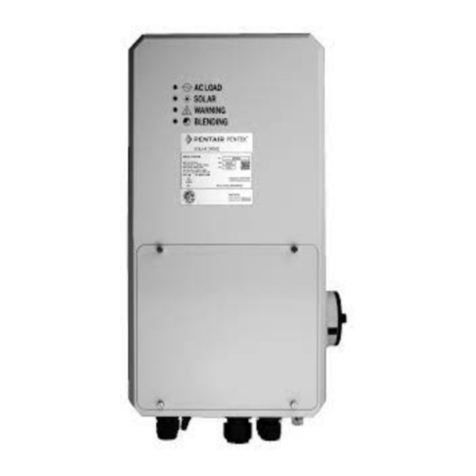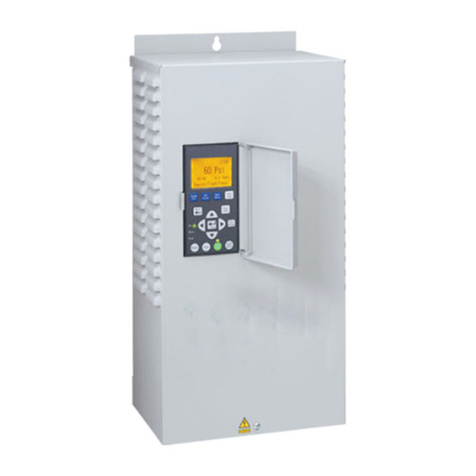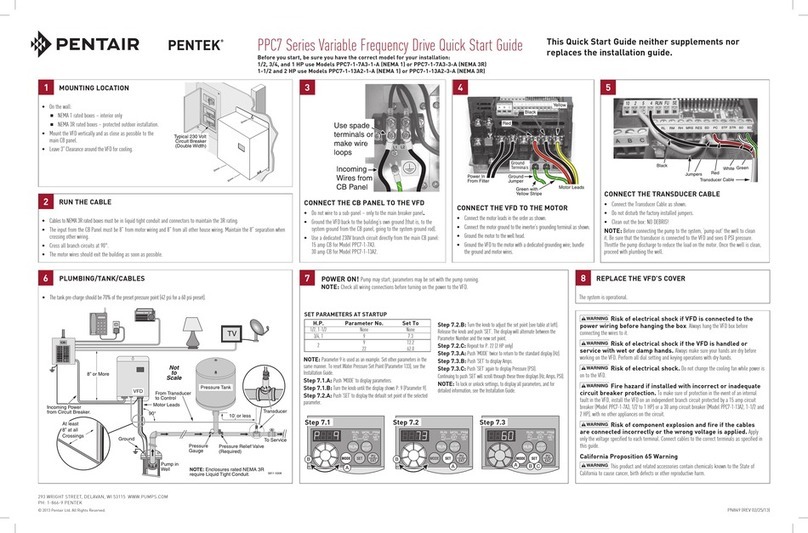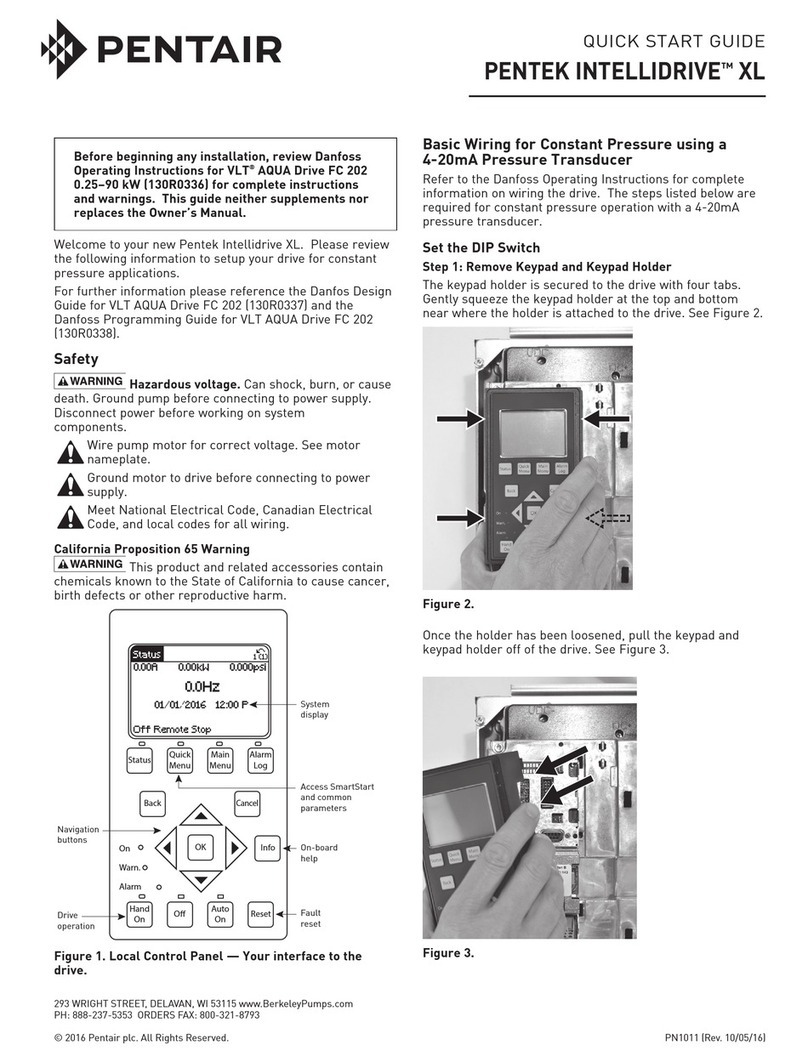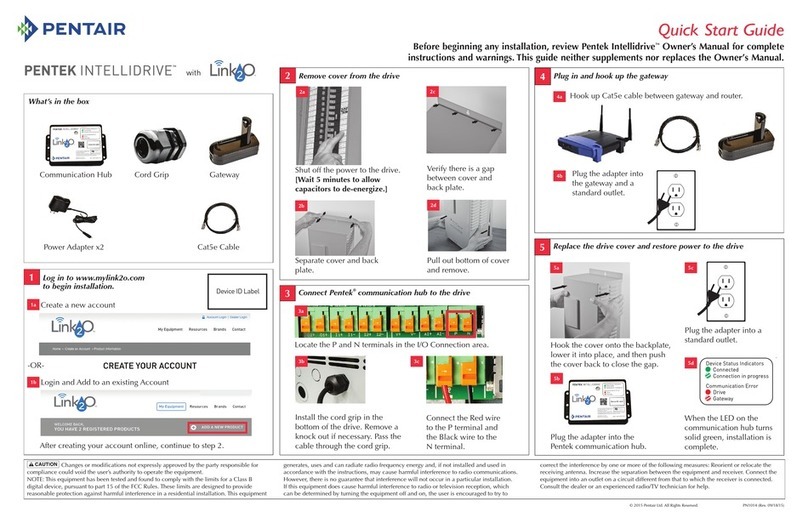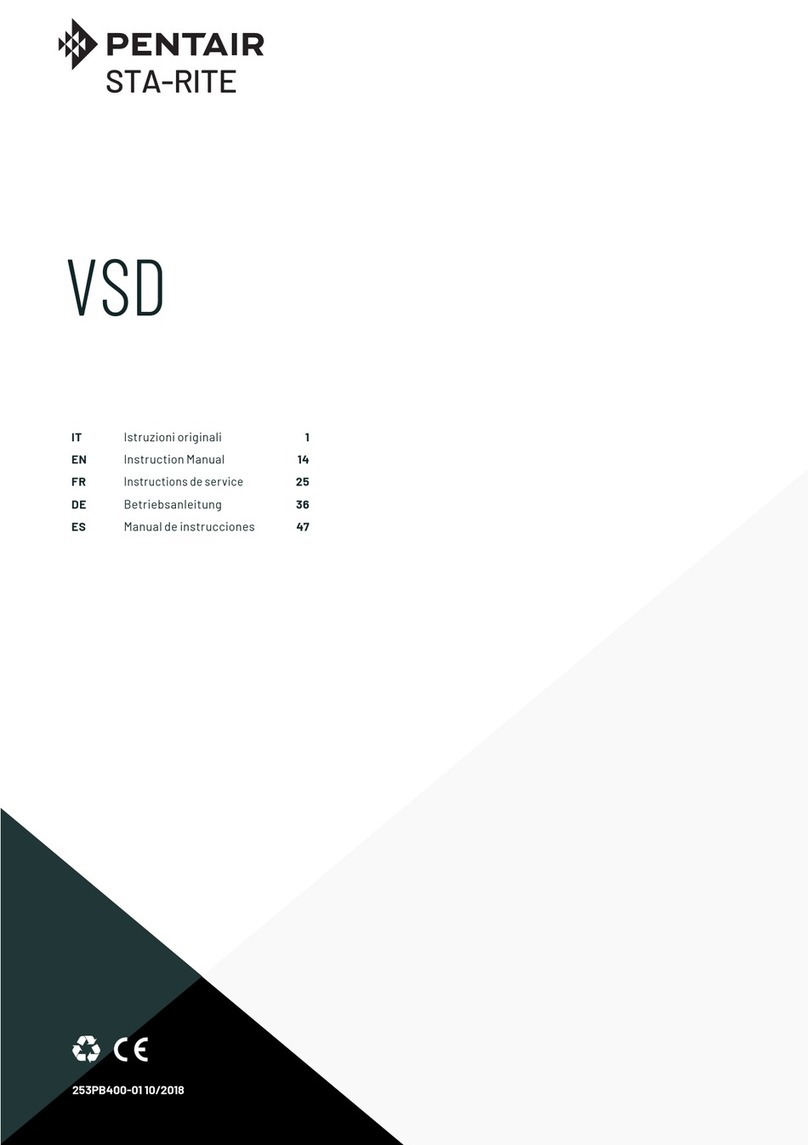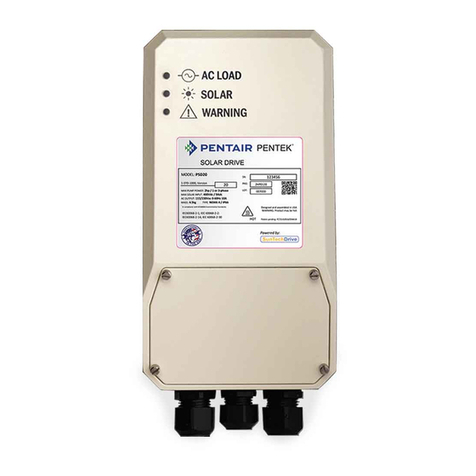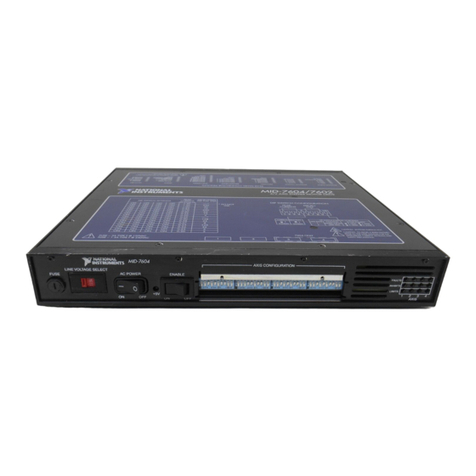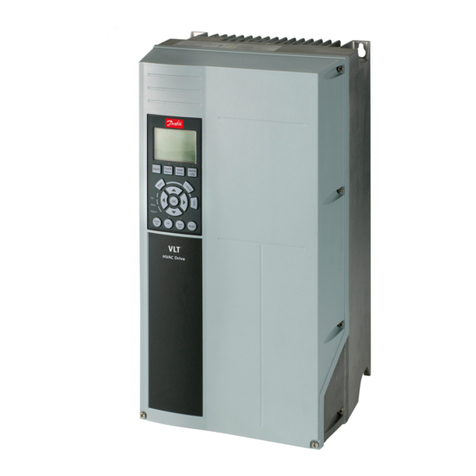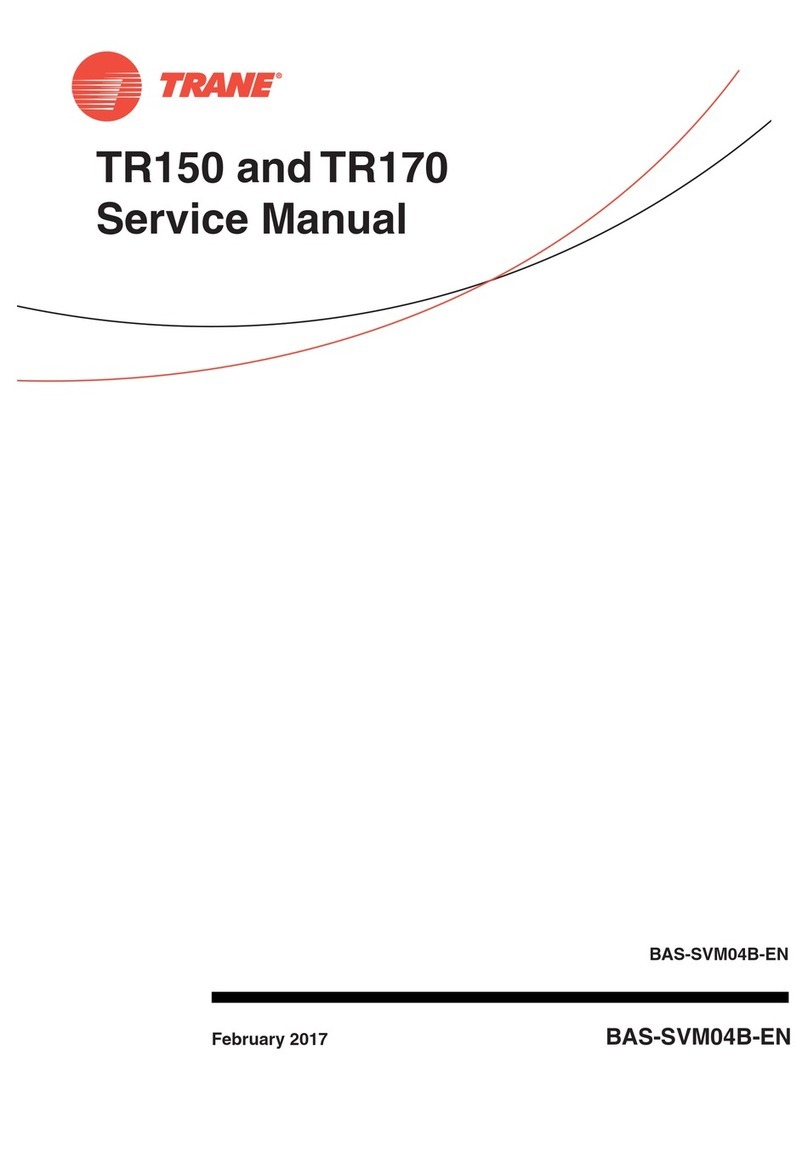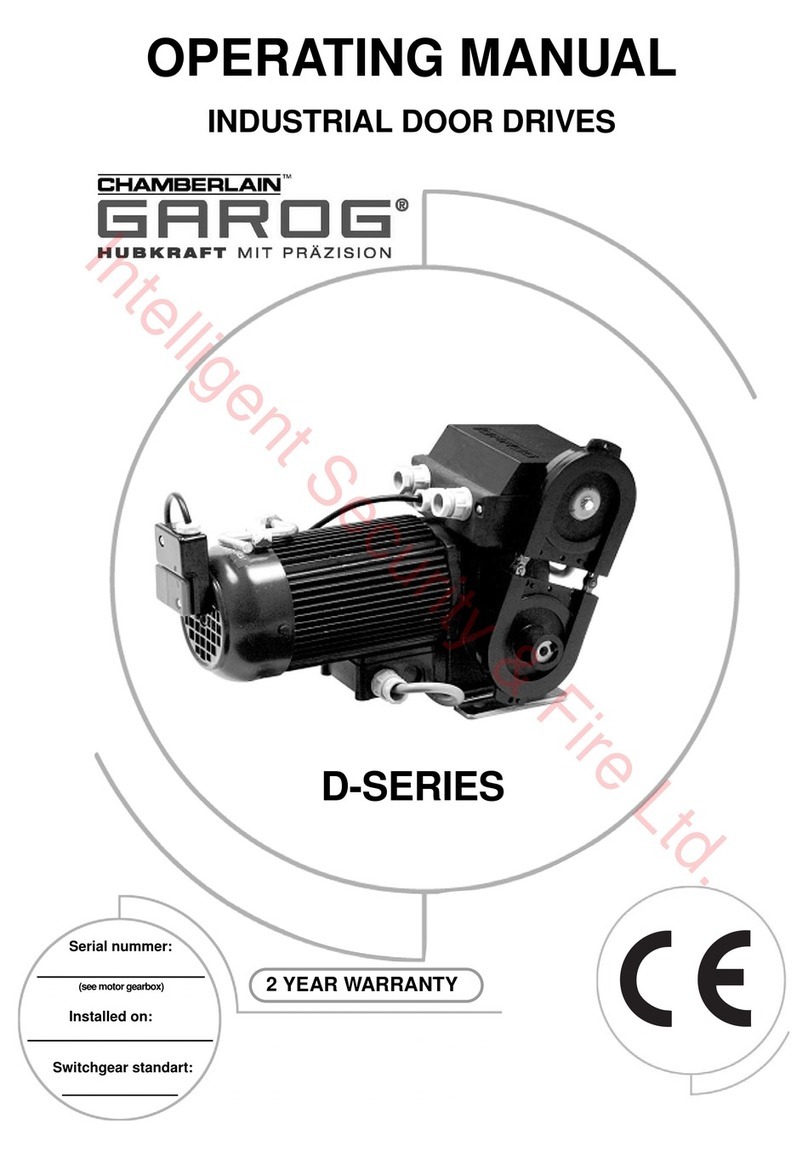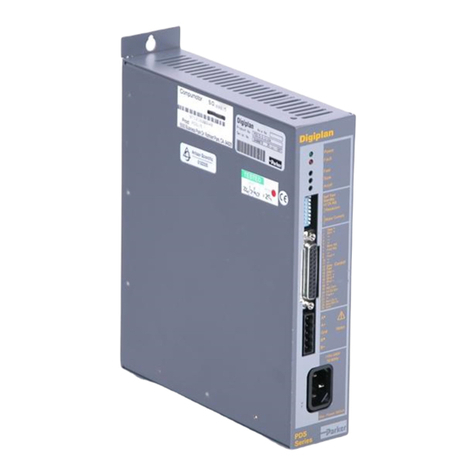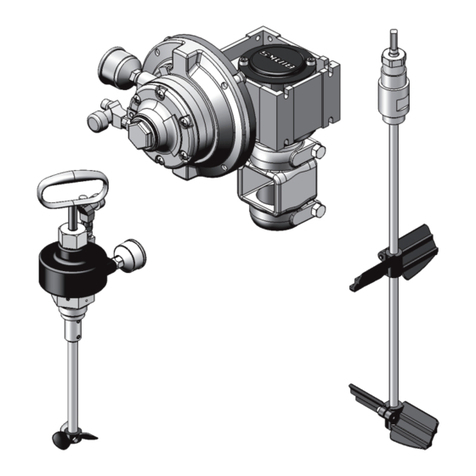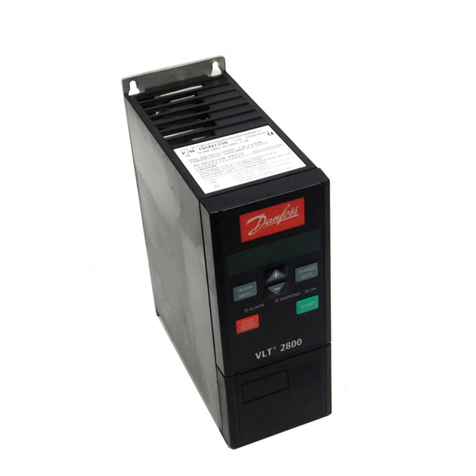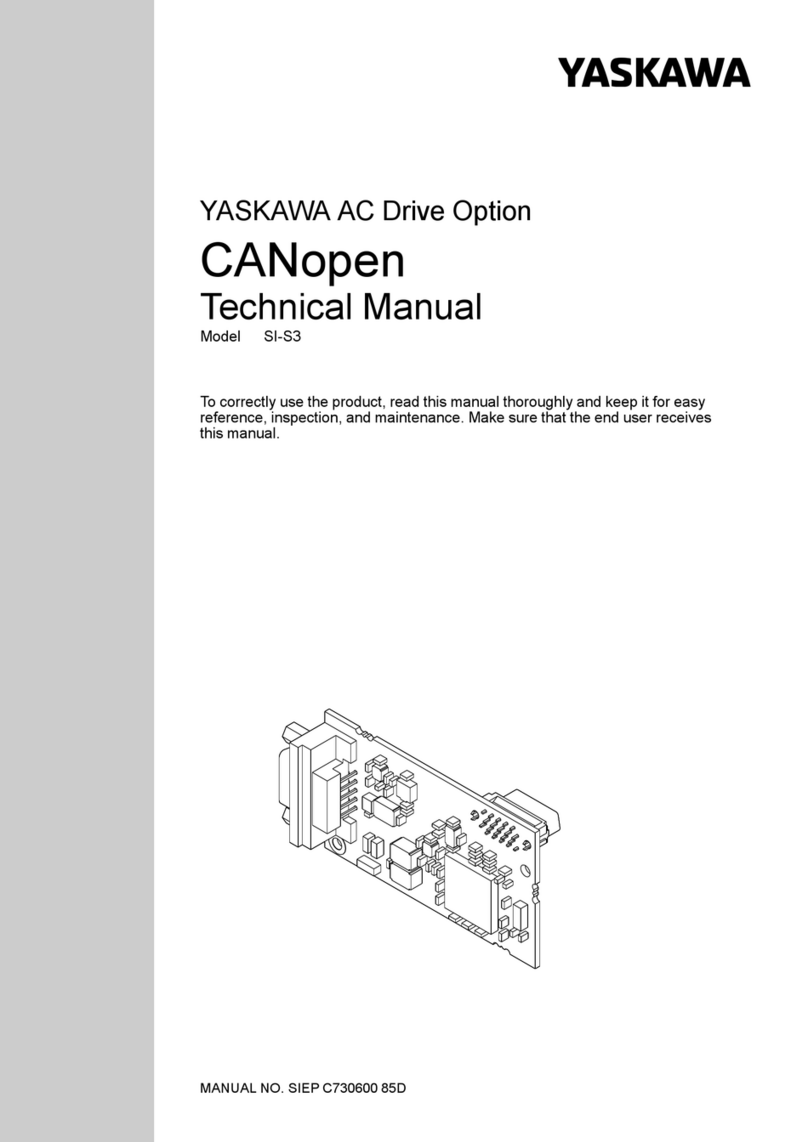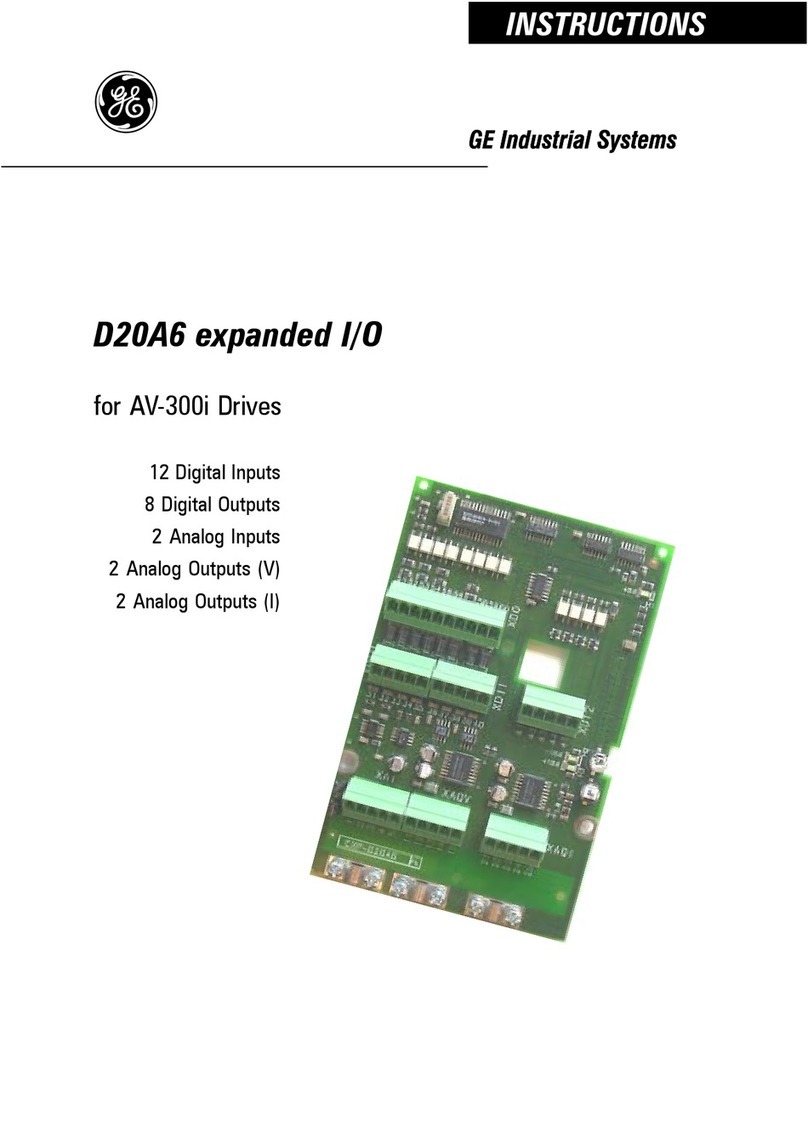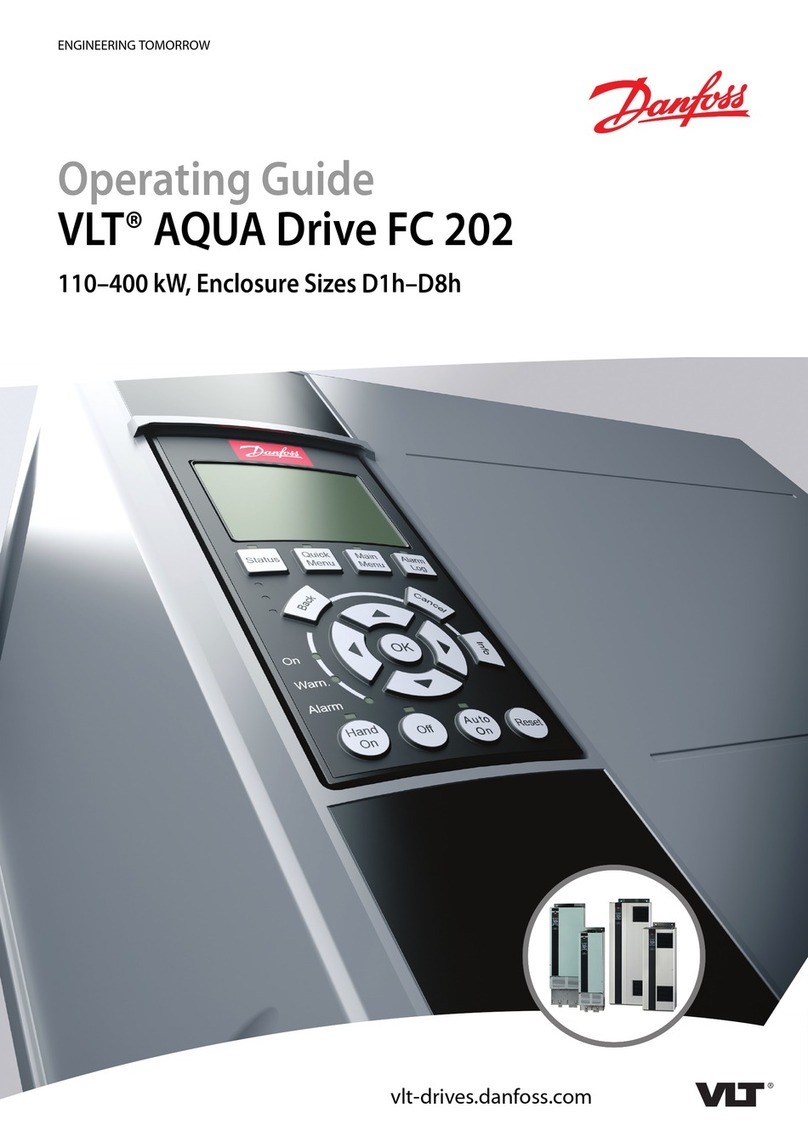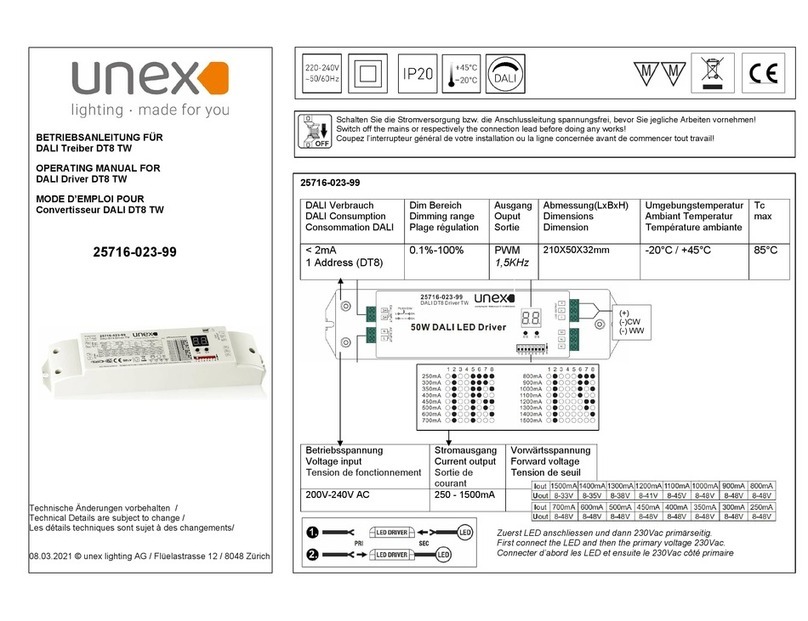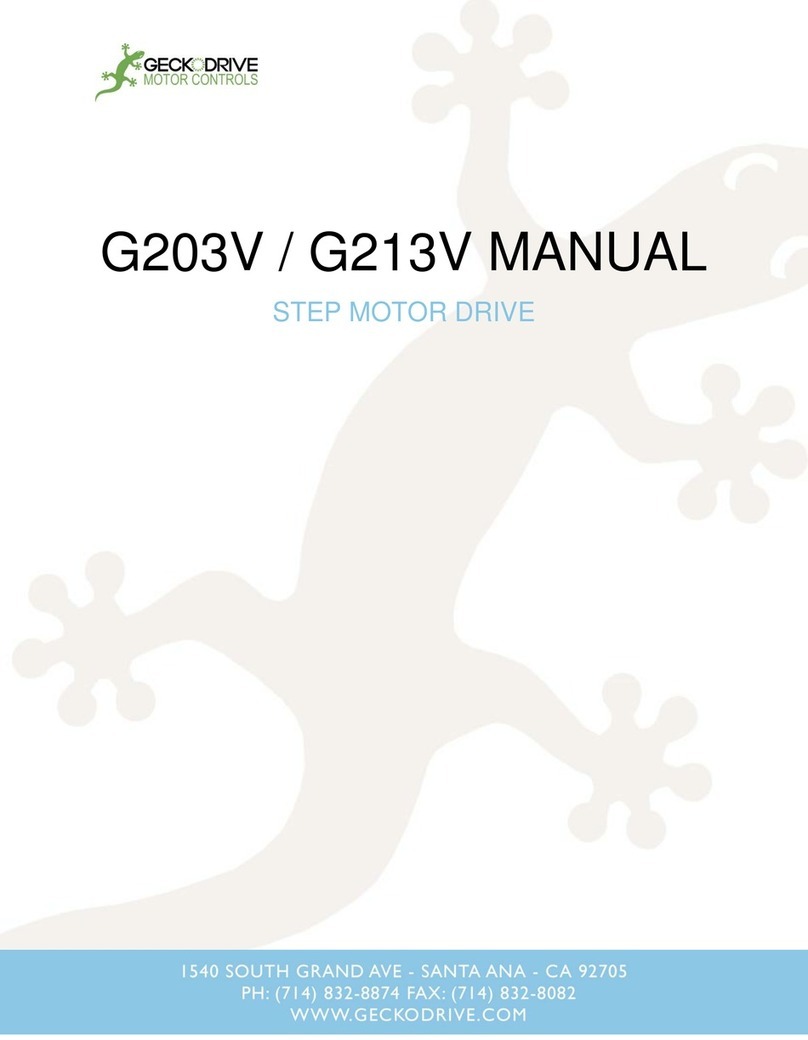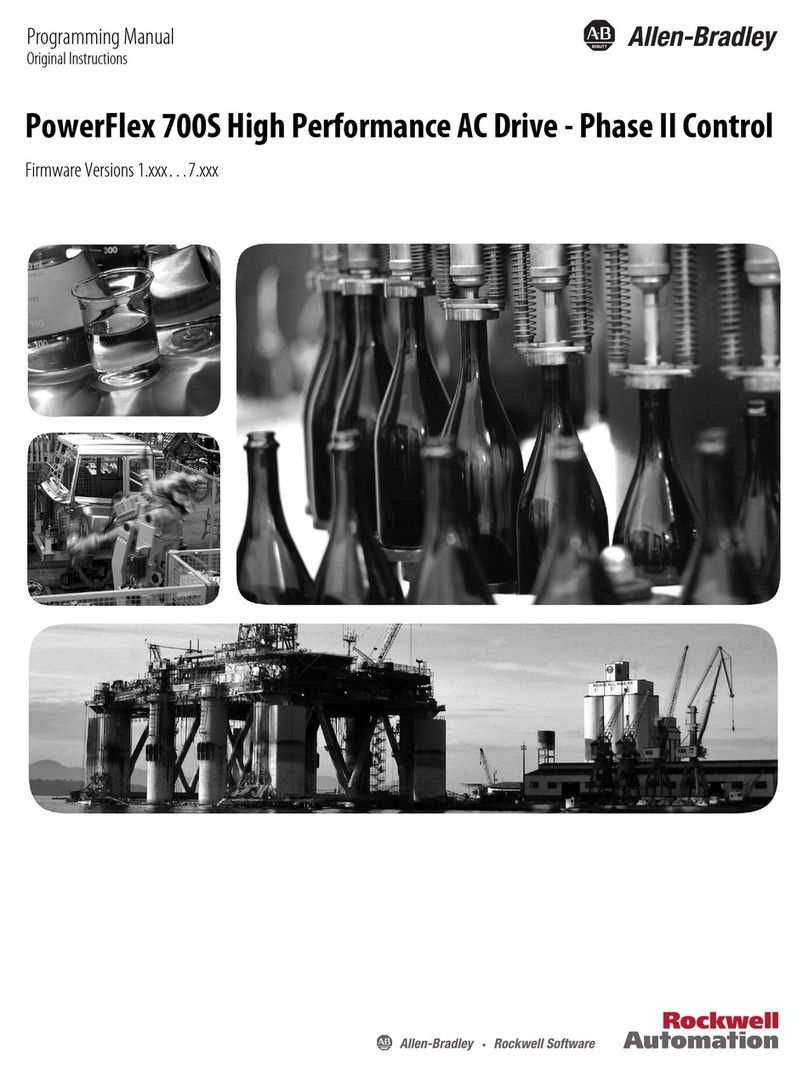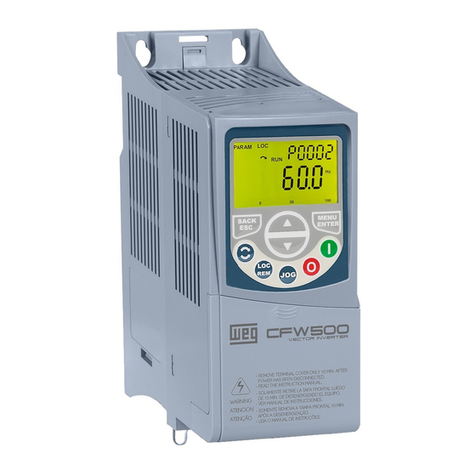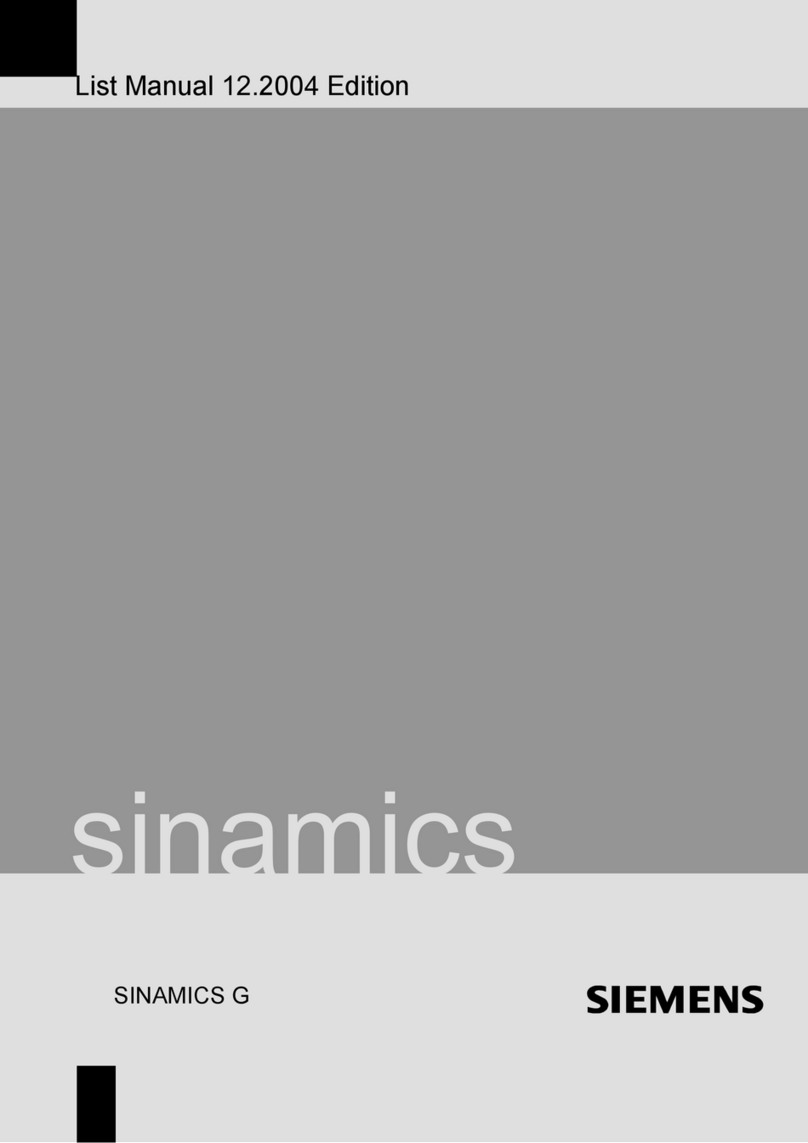1) SETTINGS: (Has 5 submenus)
Time (2 parameters):
Hour:
Allows you to change the time of day.
Date:
Allows you to change the calendar day.
PID Control: Changing these parameters is NOT
recommended. These parameters control the drive’s
reaction to pressure changes in the system. They should
be considered as a group. If it seems necessary to alter
anything in this group, please call Pentek Customer
Service at 1-300-137-344 BEFORE YOU START. Also,
note that the last item on the main menu resets ALL
parameters to the default values.
Sleep (6 parameters plus Reset):
Boost Differential:
Raises the system pressure
slightly before going into sleep mode. Units are in
PSI. The default boost value is 20 kPa. (i.e., with
Boost Differential set to 20 kPa and Pressure
Setpoint set to 400 kPa, the system pressure will
rise to 420 kPa before the drive goes to sleep).
Maximum is 70 kPa, minimum is 20 kPa.
Boost Delay:
The length of time (in seconds) that
the drive monitors the system before boosting the
pressure. Default is 60 seconds, maximum is
300 seconds, minimum is 30 seconds.
Wakeup Differential:
The total pressure drop from
the setpoint that the drive must see to come out of
Sleep mode. The default setting is 35 kPa (i.e., with
the Wakeup Differential set to 35 kPa, the drive
will wake up when the pressure in the system has
dropped 35 kPa below the system Pressure
Setpoint.) Maximum is 100 kPa, minimum is
35 kPa.
Wake Delay:
The time it takes to ramp down to the
Wake Up pressure. Default is 15 seconds,
maximum is 120 seconds, minimum is 3 seconds.
Sleep 2 PRESSURE:
A setting to prevent Over-
Pressure. If the system pressure rises enough that
the drive reaches the Sleep 2 PRESSURE setpoint,
the drive will go to sleep for one minute. Default
pressure is 550 kPa, maximum is ‘Max Sensor’
value minus 20 kPa, minimum is 100 kPa.
• NOTE: If the Internal or External Setpoint is set to
a value that is near, at, or above the
Sleep 2 PRESSURE setpoint, you may experience
nuisance tripping. In this case, raise the
Sleep 2 PRESSURE setpoint until the nuisance
tripping stops.
Boost Trigger:
Sets the frequency range that defines
system stability. When the frequency stabilizes
within this range, the drive starts the boost process.
Increasing this value allows the drive to sleep
under less stable conditions. The default is 3 Hz.
The range is 3 to 30 Hz.
Reset to defaults:
Default value is NO. Change to
YES to reset all Sleep parameters to their default
values.
Password (2 parameters):
Password Timeout:
Sets the time (in minutes) that
the drive takes to lock out the password-protected
(blue) buttons on the keypad. The range is
1 – 360 minutes; the default is 60 minutes. When
drive programming is complete, a timer starts.
Once it reaches the time set in this parameter the
buttons automatically lockout.
Password:
The Password locks or unlocks the blue
buttons on the keypad. The password is a number
(default is 7777) and can be changed to any 1- to
4-digit number.
Setpoints (2 Parameters):
Internal Setpoint:
The main pressure setting used by
the drive. The default value is 400 kPa. Maximum
is the ‘Max Sensor’ value minus 20 kPa, minimum
is 100 kPa.
External Setpoint:
The Drive’s pressure reference
when the External Input is set to External Setpoint
and the proper drive is connected to it (see I/O
section, Pages 11 and 12). Default is 300 kPa,
Maximum is ‘Max Sensor’ minus 20 kPa, minimum
is 100 kPa.
2) MOTOR (4 parameters plus Reset):
Service Factor Amps:
The service factor amps of the
motor. This value is entered during the setup
process and can be changed if necessary. For your
Global motor, use the value listed in Table 5,
Page 8. This value may differ slightly from the
motor’s nameplate amps. For other manufacturer’s
3-wire, 1-Phase motors, use the Cap Start/Cap Run
values supplied by the motor manufacturer.
Min Frequency:
The minimum frequency that the drive
will send to the motor (this translates to the slowest
speed at which the motor will run). The default is
30 Hz. If necessary this value can be increased, but
cannot exceed the Max Frequency value.
Max Frequency:
This is the maximum frequency
the drive will send to the motor (this translates to
the highest speed at which the motor will run).
The default is 50 Hz.
Reset to defaults:
Default value is NO. Change to
YES to reset all Motor parameters to their default
values.
Operation / Programming 10
